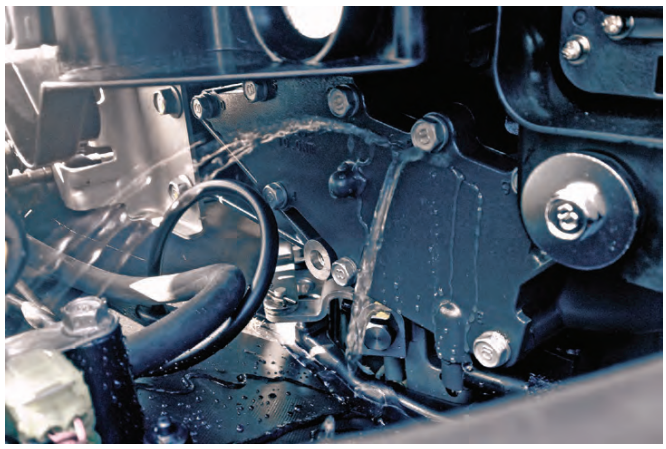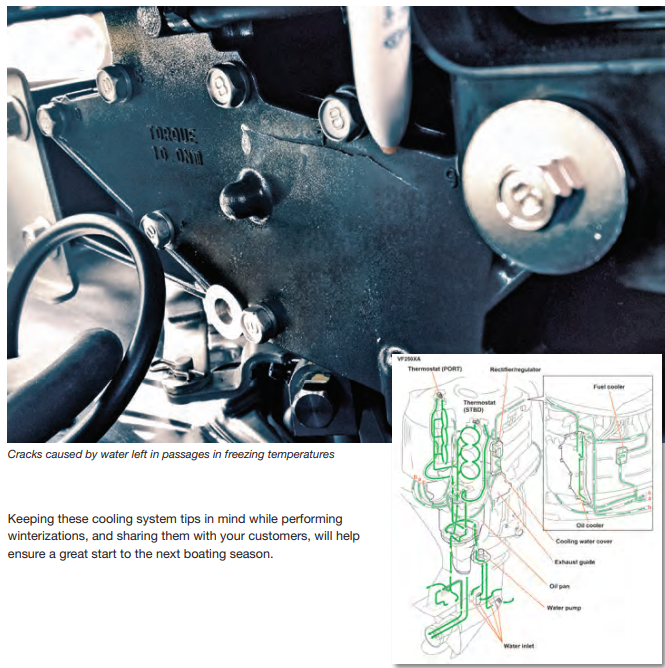
Although winter may not be on the minds of customers in late summer, it is the time for Marine service professionals to
prepare for winterizing. Many of you will be busy winterizing your customers’ stern drive and inboard powered boats
to prevent freezing of water that doesn’t self drain from the blocks and exhaust manifolds. Although outboard motors
are self-draining, there are areas of the cooling system to be mindful of to ensure all water is drained from the system.
In addition to water flowing through the block and heads, cooling water in modern outboards is sent to cooling
passages in the VST, fuel rails, rectifier/regulators, and additional oil-cooling passages on the block. Usually, the
cooling water is routed through small diameter hoses between components.
After running a motor for the last time of the season, and before freezing weather arrives, it is very important to allow
enough time for all the water to drain out of all passages. This is particularly important if a boat has been operated
in conditions where mud and sand may have entered the cooling system. The mud and sand can collect in hoses
and passages, restricting the flow of water as the system is draining. If you suspect that ingested mud or sand is
restricting water passages, it will be necessary to use compressed air to remove the restrictions.
To drain the cooling system completely, the motor must be left in a vertical position long enough to allow all water
to drain. This is particularly important on models where sections of the cooling system may be lower than the water
passages in the block and midsection when the motor is tilted up, for example: 2.8L and 4.2L models. Tilting up a
motor before it is completely drained may allow water to remain in the exhaust passage in the lower unit where it can
freeze, cracking the lower unit housing.
